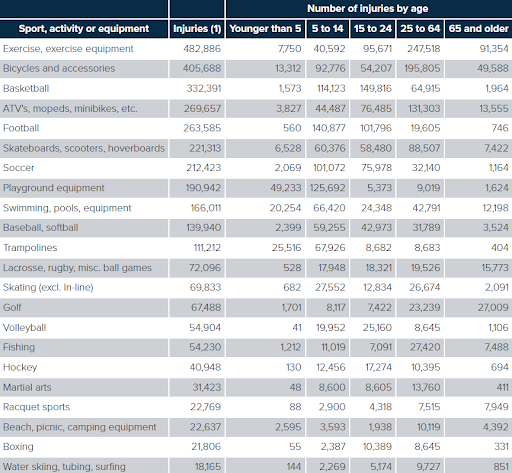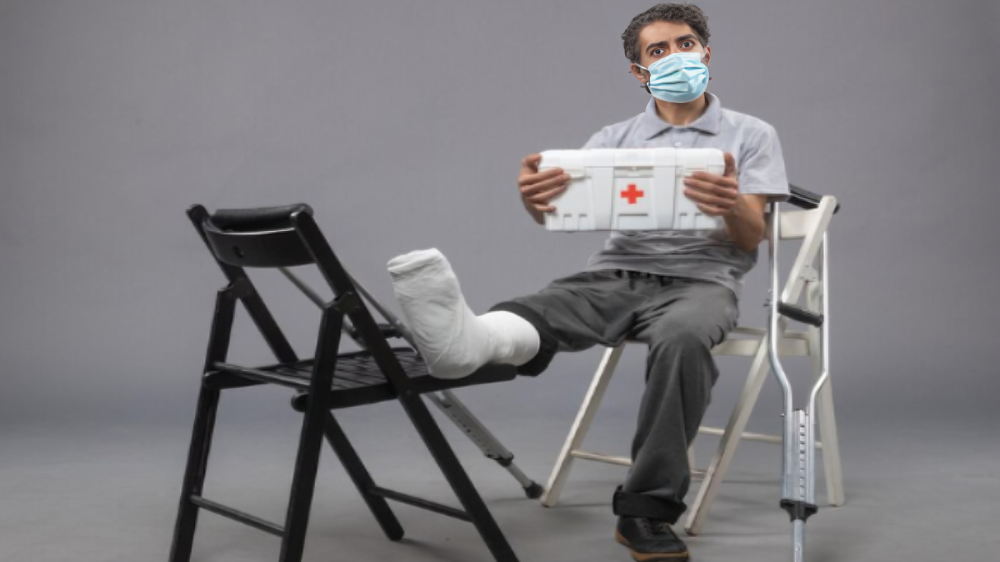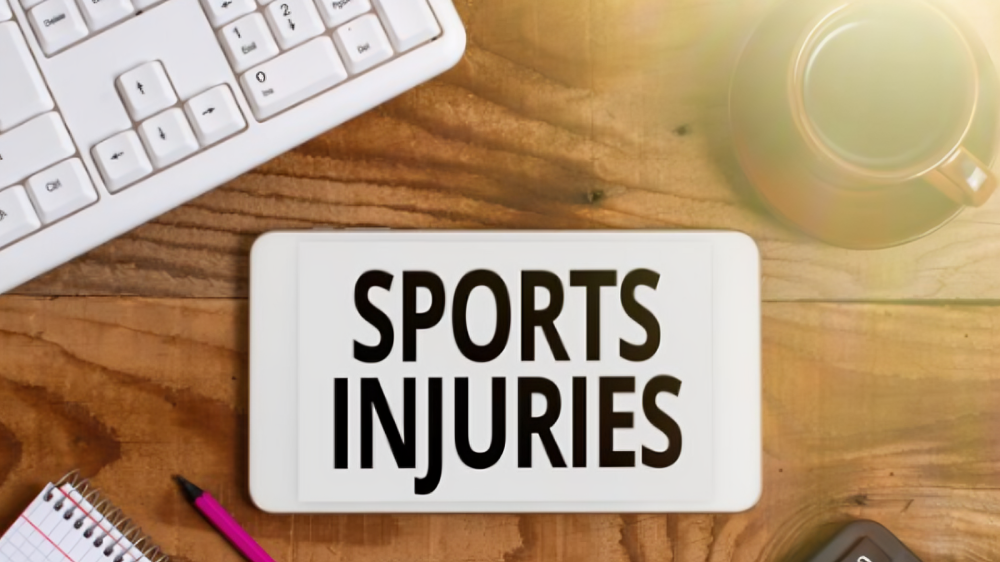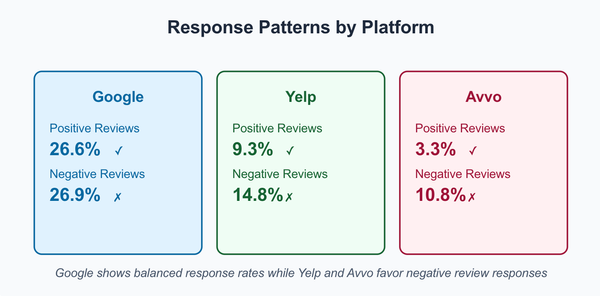Sport Injury Lawsuits: A Data-Driven Look at Legal & Health Implications

Sports are a source of joy, competition, and community, but they can also lead to injuries, ranging from minor strains to life-altering trauma. These injuries can happen at any level—youth, amateur, or professional—and while some are caused by repetitive overuse, many legal cases arise from sudden, traumatic incidents.
When a serious sports injury occurs, those affected may consider legal action and file sport injury lawsuits. This could involve filing a lawsuit against individuals, businesses, or organizations responsible for the event or activity, seeking compensation for damages. Every case is unique, and understanding the intersection of sports injuries and legal rights is essential.
Ignore the noise and latest fads; learn sports injury lawsuits, highlighting key legal and health considerations and how to file a lawsuit to get the right compensation and timely justice.
Getting to Know Sports Injuries & Their Legal Side
Injuries in sports can impact an athlete’s life, both physically and emotionally. But what about the legal angle? Here’s a breakdown in simple terms.
The key idea here is the duty of care. This means that everyone involved in sports—whether it’s coaches, organizations, or other players—is responsible for preventing harm. They need to take reasonable steps to ensure the safety of others. If they fail to do so and someone gets seriously hurt, they could face legal trouble for not meeting this responsibility.
Another important aspect is negligence. This occurs when someone doesn’t act as carefully as they should in a particular situation. Identifying negligence is often the deciding factor when figuring out who’s legally responsible for a sports injury.
Types Of Injuries In Sports That Can Be Claimed
As per U.S. sports injury law, below injuries are accountable for to claim a lawsuit:
- Skull/Head Injuries
- Concussions/Fractures/Broken bones/Joint Dislocations
- Strain/Sprain/ tissue damage like bruising
- Torn Ligaments (such as ACL tears)
- Cuts and lacerations
- Rotator cuff injuries
- Tendonitis
Official Number Of Sports Injuries in US by Years
While the record shows nearly 3.5 million sports-related injuries occurring annually among children and teens in the U.S., the breakdown can be restricted to officially claimed injuries.
Sports and recreational injuries have surged since hitting a record low in 2020, rising 20% in 2021, 12% in 2022, and 2% in 2023. According to the National Safety Council (NSC), nearly 482,886 injuries took place in 2023, which is an extra 8% in 2023 compared to 445,642 in 2022, turning to the highest recorded no of injuries in any sports and recreation category.

Moreover, The 15-24 age group faces the highest injury rates, with males (276,377) outnumbering females (206,381). Notably, 90% of victims receive emergency treatment and are released.

Number of successful claims per year
To put it simply, there is no such specific data on the number of successful sports injury claims per year. The reason is that ordinary sports injuries do not support legal claims unless the injury results from a risk not inherent to the sport.
What Sport has the Highest Injury Rate in the US?
In the U.S., football has the highest injury rate, followed by basketball and soccer, with football leading to 26.5% of injuries.
What is the largest Sports Injury Compensation?
The sports history is marked with many settlement cases for their high compensation rates, some of them include:
- NCAA athlete pay settlement: In December 2024, the law firms sought more than $515 million in legal fees after a $2.8 billion recovery from the NCAA for student-athletes compensation.
- NFL Concussions: The NFL had set aside roughly $521 million in 2019 for compensation of claims that involved concussions.
- NBA Knee Injury: The NBA alone paid $125 million for injured players in 2018, and almost $40 million was given to a knee injury request.
What are the costs of the claim and the cost of hiring a lawyer?
It depends on the case. Where the cost can be wrapped up around 33% of the total contingency amount recovered for personal injury, the scale can rise to 40% if a lawsuit is filed.
Further, the additional costs may include expenses for medical records, expert witnesses, and court fees, which can vary depending on the case's complexity.
What is the Common Claim Size Generally?
Again, it is the subject of the injury's severity. For instance, ACL injuries can result in settlements ranging from $10,000 to $50,000, while meniscus tears may lead to payouts between $15,000 and $60,000.
Who Can You Hold Accountable for a Sports Injury?

If you’ve been injured while playing sports and want to seek compensation, you first need to figure out who’s responsible. Sometimes, the blame can be spread across multiple people or organizations. Here’s a breakdown of who might be at fault:
Who Could Be Liable for Your Sports Injury:
- Other Players – If another player caused your injury carelessly or recklessly.
- Coaches or Trainers – If they didn’t provide proper training, safety precautions, or supervision.
- Schools or Sports Leagues – If they didn’t follow safety rules or ensure the environment was safe.
- Government Bodies – If your injury happened because a public facility wasn’t properly maintained or managed.
- Equipment Makers – If your injury was caused by faulty or damaged equipment.
Figuring out who’s at fault is key to building a strong case for compensation. Experienced personal injury lawyers can help you determine who’s responsible for your injury. To find the best lawyers in your area, check out our list of top attorneys on our state’s diversity page.
Types of Sports Injury Cases That Might Lead to Legal Claims

Sports injuries happen in different ways, and many people do not know there may be legal grounds for a lawsuit. Here are some cases where you might be able to file a claim after a sports injury:
Negligent Coaches or Trainers
Coaches and trainers are responsible for training athletes properly and following safety protocols. If they fail to do this, especially when it comes to identifying or managing injuries, they could be liable for personal injury or even wrongful death.
Unsafe Playing Conditions
Facility owners need to maintain their sports grounds and facilities safely. If they neglect hazards or fail to fix known dangers, they may be held accountable for any injuries.
Aggressive or Violent Behavior
If a player becomes overly aggressive or engages in harmful physical altercations, they might be liable for injuries in sports caused to others. While it’s often tough to hold players responsible, in extreme cases, legal action could be taken. It's always wise to consult an experienced personal injury lawyer to evaluate your situation.
Defective Equipment
Faulty sports equipment can cause serious injuries. If the equipment is defective, the manufacturer could be held accountable for the injuries caused. A product liability claim may help in such cases.
Lack of Supervision
Especially in youth sports, coaches and supervisors must always monitor players closely. Inexperienced players may not recognize dangers, so proper supervision is critical. If a coach fails to do this, they could be liable for injuries in sports.
Medical Malpractice
If medical staff, such as trainers or EMTs, mishandle an injury—whether it's misdiagnosis or failure to follow safety protocols— they could be responsible for the harm caused. For example, if a head injury is ignored or not treated properly, the injured player may have grounds for a personal injury claim.
If you’re dealing with a sports injury and think you might have a legal claim, it’s best to consult with an experienced personal injury lawyer. They can guide you through the process, gather evidence, and help you seek justice.
Understanding Assumption of Risk in Sports Injury Lawsuits
When you step onto the field or court, you’re acknowledging that certain risks are involved. The "assumption of risk" in sports means that athletes understand and accept the potential for injury due to physical contact or competition.
But it’s important to note that assuming the risk doesn’t mean that others are off the hook for recklessness. If the injury was caused by intentional harm or negligence from a fellow player or the organization, they could still be held accountable.
This legal concept can be tricky, so it’s wise to consult with a personal injury lawyer if you find yourself in an injury situation. They can help you understand your rights and whether you might be entitled to compensation.
Famous Examples of Sports Injury Cases
Sports injuries can affect anyone, from casual players to famous athletes. However, when high-profile individuals are involved, their cases can become much more complicated, especially when it comes to proving their innocence.
Here’s a look at two notable sports injury cases that illustrate the legal complexities behind these claims. If you're dealing with a similar situation, it's always best to consult with a personal injury attorney in Los Angeles for expert advice on your case.
Gwyneth Paltrow's Skiing Accident
Probably the most famous sports injury of 2016 was skiing at Deer Valley Resort by Gwyneth Paltrow. The man involved, Terry Sanderson, sued Paltrow for $300,000 and claimed she crashed into him on a beginner's slope area, leading to a concussion and four broken ribs.
Sanderson claimed that he was unable to work and was never the same man he used to be after getting into the accident. Paltrow said that he lied and was living off her fame. Just to share the moments, Paltrow burst into tears after saving her children and releasing GoPro footage of the incident; she was proven innocent.
As such, this case focuses on the risks involved in sporting activities and the need to protect the rights of anybody involved. There is a need to evaluate the legal position of personal injuries in sports. In sports, there are always risks, though they do not have to be reckless, and this seems to be a bad attitude.
NFL and Traumatic Brain Injuries (TBI)
The NFL was brought to a massive $765 million class-action lawsuit in 2013 by its retired players. More than 4,000 athletes and their heirs have sued the NFL for millions, accusing the organization of having deceived players about the permanent risks of concussions and head traumas.
Although the NFL and other sports administration bodies are developing ways and measures to enhance player protection, dangers persist. A recent example Quang was referring to was the situation at Michigan State University when the medical team was accused of letting player Alante Brown continue to play even after clear symptoms of concussion. However, there is no legal proceeding in this case yet.
Taking legal action against some large organizations, such as the NFL or NCAA, may not be easy, but it can be done with proper help. These organizations must take proactive steps to protect athletes, including:
- Updating safety regulations and rules
- Improving injury assessment and treatment procedures
- Requiring better protective equipment
- Providing ongoing education and training for both staff and athletes
If you're considering a case against a professional sports organization, contact the best personal injury attorneys specializing in this area to get the compensation you deserve.
What Happens in Wrongful Death Cases Caused by Sports Injuries?
Sports injuries can, unfortunately, sometimes lead to fatal outcomes, and when they do, a wrongful death lawsuit may be necessary. These tragic events can be caused by a variety of factors, such as negligent coaching, faulty equipment, or a lack of proper safety measures.
If a loved one dies due to such an incident, the surviving family members must file a claim within a certain time frame, usually two years from the date of death. A Los Angeles wrongful death lawyer can guide the family through the legal process, helping them secure compensation for funeral costs, lost wages, and emotional loss.
However, wrongful death claims tend to be more complicated than regular injury cases. These cases involve detailed investigations into who is responsible, making the process more time-consuming. But these efforts are essential to ensure justice and appropriate compensation.
How can I Legally Pursue Sports Injury Compensation?
In order to successfully file a sports injury lawsuit, you need to take care of some of the factors, including:
- Seek Medical Assessment: Immediately after the injury, consult a healthcare professional to assess and document the injury.
- Document the Incident: Record details of how the injury occurred, including date, time, location, and any witnesses.
- Consult an Attorney: Engage a personal injury lawyer experienced in sports injury cases to evaluate the claim's viability.
- File a Claim: If advised, initiate a claim against the responsible party, which may involve negotiations or proceeding to court.
- Settlement or Trial: Many cases are settled out of court, but if a fair agreement isn't reached, the case may go to trial for a judge or jury to decide.
Moreover, it is imperative to understand that not all sports injuries are eligible for compensation, especially if they result from the inherent risks of the sport. Legal advice is crucial to determine the best course of action.
Connect with the Best Personal Injury Lawyer Today!
Sports injuries can have serious legal and health implications. Identifying the responsible parties and understanding the available legal options is crucial for those affected. If you're struggling to find the right professional to assist you, sign up at Lawyersrating.fyi and get connected with some of the best personal injury lawyers in the USA. They can guide you through the process and help you secure the compensation you deserve.





